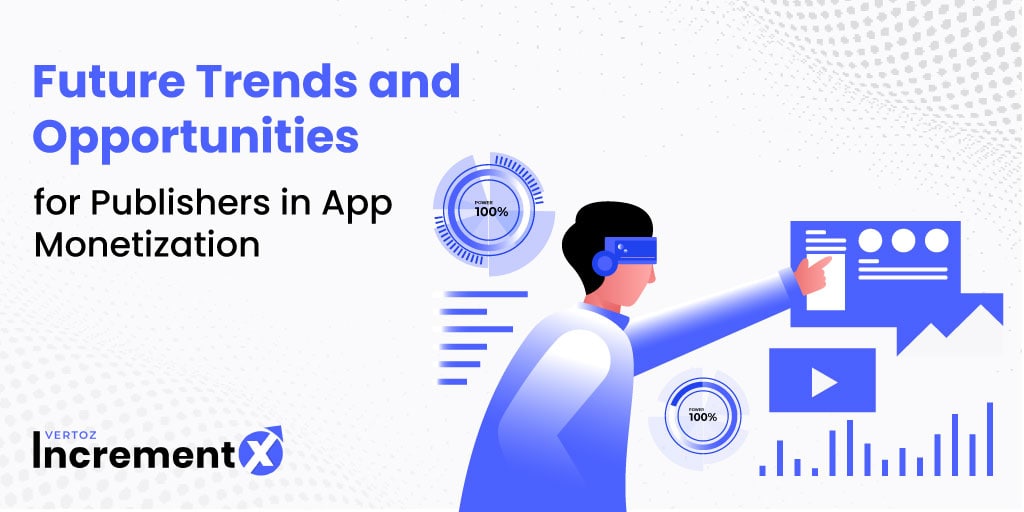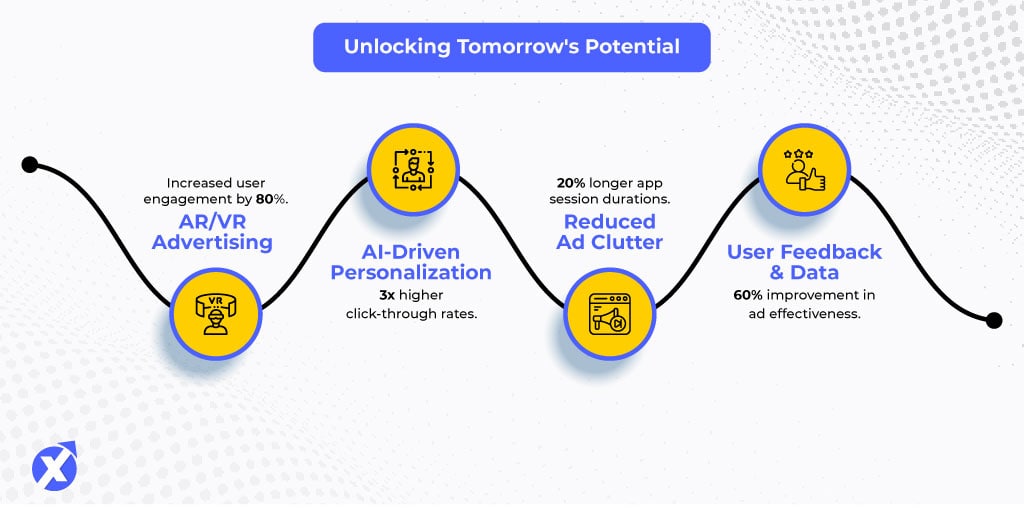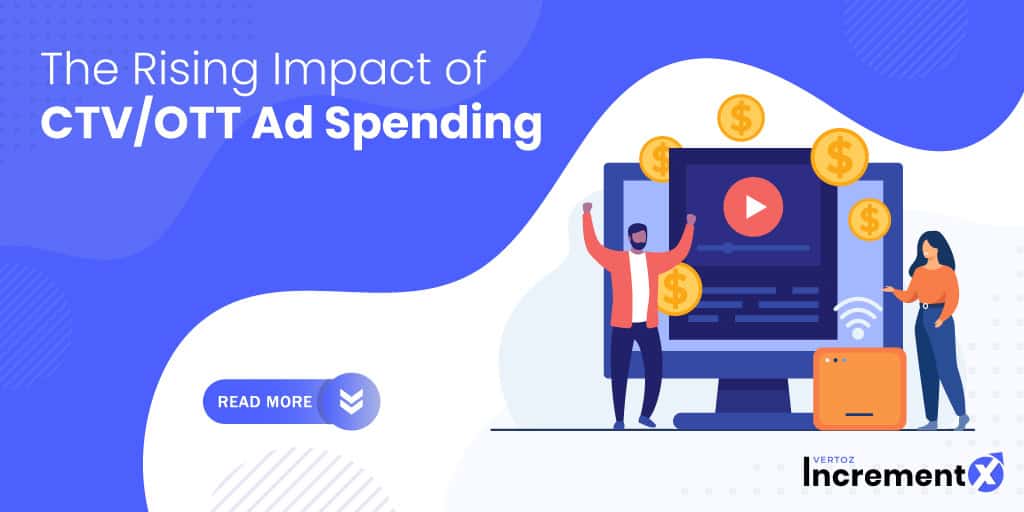The world of App monetization is continually evolving, driven by emerging technologies, regulatory changes, and the pursuit of more user-centric models. Ad publishers are at the forefront of this dynamic landscape, constantly seeking innovative ways to generate revenue while providing value to users. In this blog, we will explore some key factors shaping the future of App monetization.
Table of contents:
Emerging Technologies
The integration of emerging technologies into mobile applications is revolutionizing the way users interact with content, opening up new possibilities for Ad publishers. Augmented Reality (AR) and Virtual Reality (VR) have gained considerable momentum, offering immersive experiences that go beyond traditional advertising formats.
- AR/VR Advertising:
AR/VR technologies enable publishers to create interactive, 3D Ads that users can engage with in real time. Imagine trying on clothes virtually or experiencing a virtual test drive of a car—all of these opportunities represent new ways to deliver engaging and memorable ad experiences. Companies like Snapchat and Facebook have already begun to leverage AR filters and VR content for advertising campaigns.
- AI-Driven Personalization:
Artificial Intelligence (AI) is transforming the way ads are targeted, making them more relevant to users. Machine learning algorithms analyze user data to deliver hyper-personalized ads, improving user engagement and ad performance. Ad publishers can harness AI to optimize ad delivery, making it less intrusive and more effective.
- Real-time Bidding and Programmatic Advertising:
AI-driven algorithms can make real-time decisions on ad placement and bidding, ensuring that the right ad is shown to the right user at the right time. This not only maximizes ad revenue but also enhances the user experience by reducing irrelevant ads.
- Voice Search:
Voice-activated devices are on the rise, and voice search is becoming a common way for users to interact with apps. Ad publishers can take advantage of this trend by creating voice-optimized ads and integrating them into voice-activated apps.
As emerging technologies become more accessible and prevalent, ad publishers who embrace these innovations stand to gain a competitive edge in the market.
Regulatory Changes
Privacy concerns have become paramount in the digital landscape, leading to a series of regulatory changes that impact how user data is collected, stored, and utilized. These changes present challenges and opportunities for publishers in app monetization.
- Data Privacy Regulations:
Regulations like the General Data Protection Regulation (GDPR), California Consumer Privacy Act (CCPA), and the Singapore Personal Data Protection Act (PDPA), have tightened the rules surrounding user data collection and consent. Publishers must ensure that their data practices comply with these regulations, which may require adjustments in their ad targeting strategies.
- Transparency and Consent:
The trend toward transparency and user consent is a crucial one. Ad publishers should communicate their data collection practices clearly to users and offer them a choice in how their data is used for advertising. This not only complies with regulations but also builds trust with users.
- Alternative Data Sources:
With some limitations on first-party data, ad publishers are exploring alternative data sources, such as contextual targeting and inferred data. These approaches rely less on direct user data and can still provide valuable insights for ad targeting.
- Privacy-Focused Ad Formats:
Privacy-first ad formats, like non-intrusive interstitials and rewarded ads, are gaining popularity. These formats respect user privacy while offering a value exchange, such as in-app rewards for viewing an ad.
While navigating the evolving regulatory landscape can be challenging, it also presents an opportunity for ad publishers to differentiate themselves by adopting privacy-conscious practices that resonate with users.
User-Centric Monetization Models
User experience has emerged as a critical factor for app monetization. Users are increasingly discerning about the content and ads they encounter, and ad publishers must adapt to these preferences.
- Opt-In and Rewarded Advertising:
Opt-in and rewarded ad models are gaining traction. In these models, users choose to engage with ads in exchange for in-app rewards, such as virtual currency, premium content, or extended features. This approach fosters a positive user experience and encourages users to interact with ads willingly.
- Ad Personalization and Relevance:
As mentioned earlier, AI-driven personalization ensures that ads are relevant to users’ interests. Ad publishers should aim to provide a seamless ad experience by delivering content that aligns with users’ preferences, thereby increasing the chances of engagement.
- Reduced Ad Clutter:
Overloading apps with too many ads can harm user experience. Ad publishers are now focusing on optimizing ad placements and frequency to ensure that users are not bombarded with ads, making the overall app experience more enjoyable.
- User Feedback and Data:
Actively soliciting user feedback and analyzing user data can help publishers fine-tune their monetization strategies. Listening to user preferences and adapting ad formats accordingly is essential for long-term success.
In Conclusion
The future of app monetization for publishers is being shaped by a dynamic landscape of emerging technologies, regulatory changes, and the increasing importance of user-centric models. Ad publishers who embrace AR/VR, AI-driven personalization, and user-friendly practices will find new and exciting ways to generate revenue while delivering better user experiences. Staying ahead of regulatory changes, ensuring data privacy, and offering transparency will not only foster trust with users but also keep ad publishers compliant with evolving legal requirements.
The key to success in this ever-changing environment is a balance between revenue generation and user satisfaction. By adopting these future trends and opportunities, ad publishers can continue to thrive in the world of app monetization.




